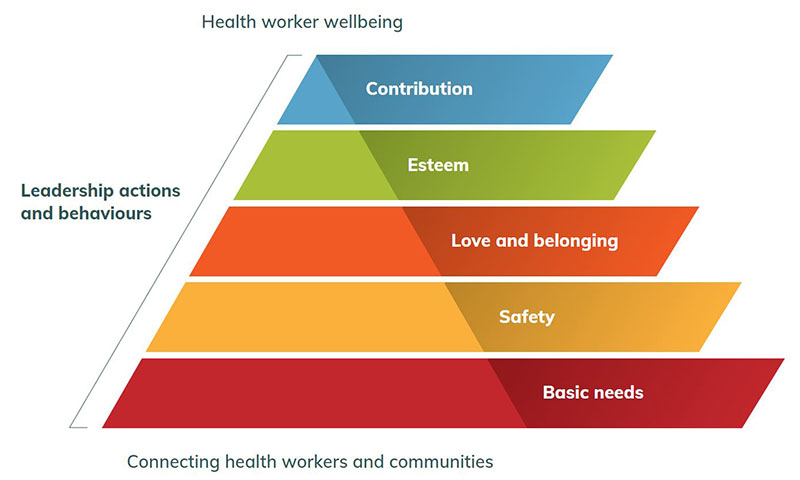Through the challenges of COVID-19 and beyond, the Pandemic Kindness Movement is here to support your wellbeing. Dr Tracey Tay, an Agency for Clinical Innovation Clinical Executive Director, shares the story behind the movement.
Early 2020 changed the world for all of us. COVID-19 became a reality and health workers were faced with an unprecedented challenge.
Processing news of COVID-19 and lockdowns; preparing for the impact on the health system; learning how to keep ourselves, our colleagues and our loved ones safe – all while providing compassionate healthcare – were all in a day’s work in those early months.
As the crisis evolved, you couldn’t ignore the overwhelming fatigue faced by health workers and the social media posts about psychological, physical and even financial safety.
My colleague Dr Jane Munro describes the feeling like standing on a beach, watching the waves go all the way out, knowing a tsunami was about to hit.
Dr Munro posted about supporting health staff on social media. Within 72 hours, a core group of health leaders1 from across Australia (including myself) came together and the Pandemic Kindness Movement was born. Our aim was to provide health workers with easy access to quality wellbeing resources that would support them when that big wave crashed onto the beach.
Responding to individual needs
Great resources are available; but finding what you need, when you need it, can be hard. During the biggest health crisis ever seen, we wanted to ensure wellbeing information and access was:
- quick
- endorsed
- not hidden behind paywalls
- appropriate for health workers across the system (not just for clinicians)
- available at an individual’s level of need.
We based the Pandemic Kindness Movement model on Maslow’s hierarchy of needs, acknowledging that health staff experience a variety of personal and professional impacts from the pandemic.
Our health worker wellbeing pyramid reflects the pillars that contribute to staff wellbeing, with effective leadership being critical at all levels of the pyramid.

Thanks to the ongoing support of health organisations, such as the NSW Agency for Clinical Innovation, Safer Care Victoria, South Australia’s Commission on Excellence and Innovation in Health, and Queensland Health, resources about leadership and the pillars covered at each level of the pyramid were included on the Pandemic Kindness Movement website. Resources were also added for Aboriginal health workers.
An indication of wellbeing
Since its launch in May 2020, the website pages have been viewed more than 116,300 times, and we’ve seen visits rise when the health system is under more pressure. During recent waves in NSW and Victoria, we’ve seen page views increase by 386%.2
The movement is a small part of supporting health worker wellbeing and safety. Ideally, it sits within (or alongside) programs and initiatives that health systems put in place to support staff. However, the positive response has shown it is a valued piece of the puzzle.
Anyone working in health can use the resources, including clinicians, security, cleaners and food preparation staff.
You can promote the resources by downloading print and digital posters available on the website, or by simply telling a colleague about the movement.
Visit the Pandemic Kindness Movement website
1 The Pandemic Kindness Movement group: Dr Tracey Tay (NSW Agency for Clinical Innovation), Dr Jane Munro (The Royal Children’s Hospital Melbourne), Dr Kym Jenkins (Council of Presidents of Medical Colleges), Dr Shahina Braganza (Queensland Health), Mary Freer (Compassion Revolution), Dr Sam Bendall (NSW Health, CareFlight) and Dr Lynne McKinlay (Queensland Health)
2 Pandemic Kindness Movement website page views in May 2021 (1,412) compared to September 2021 (6,866).